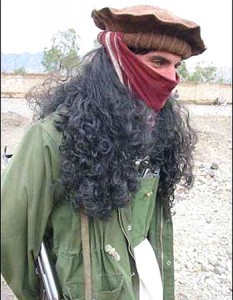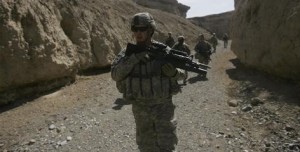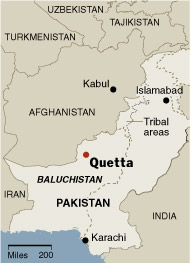Is Pakistan the Next Failed State?
BY Herschel SmithConcerns are being raised about the potential instability of the most populous province in Pakistan.
Taliban insurgents are teaming up with local militant groups to make inroads in Punjab, the province that is home to more than half of Pakistanis, reinvigorating an alliance that Pakistani and American authorities say poses a serious risk to the stability of the country.
The deadly assault in March in Lahore, Punjab’s capital, against the Sri Lankan cricket team, and the bombing last fall of the Marriott Hotel in Islamabad, the national capital, were only the most spectacular examples of the joint campaign, they said.
Now police officials, local residents and analysts warn that if the government does not take decisive action, these dusty, impoverished fringes of Punjab could be the next areas facing the insurgency. American intelligence and counterterrorism officials also said they viewed the developments with alarm.
“I don’t think a lot of people understand the gravity of the issue,” said a senior police official in Punjab, who declined to be identified because he was discussing threats to the state. “If you want to destabilize Pakistan, you have to destabilize Punjab.”
Attacks intended to intimidate and sow sectarian strife are more common. The police point to a suicide bombing in Dera Ghazi Khan on Feb. 5. Two local Punjabis, with the help of Taliban backers, orchestrated the attack, which killed 29 people at a Shiite ceremony, the local police said.
The authorities arrested two men as masterminds on April 6: Qari Muhammad Ismail Gul, the leader of a local madrasa; and Ghulam Mustafa Kaisrani, a jihadi who posed as a salesman for a medical company.
They belonged to a banned Punjabi group called Lashkar-i-Jhangvi, but were tied through phone calls to two deputies of the Pakistani Taliban leader Baitullah Mehsud, the police said.
“The phone numbers they call are in Waziristan,” said a police official, referring to the Taliban base in the tribal areas. “They are working together hand in glove.” One of the men had gone for training in Waziristan last summer, the police said. The operations are well-supported. Mr. Kaisrani had several bank transfers worth about $11 million from his Pakistani account, the authorities said.
people complain that landowners and local politicians have done nothing to stop the advance and, in some cases, even assist the militants by giving money to some of the religious schools.
“The government is useless,” said Mr. Ali, the local landlord. “They live happy, secure lives in Lahore. Their children study abroad. They only come here to contest elections.”
The police are left alone to stop the advance. But in Punjab, as in much of the rest of Pakistan, they are spread unevenly, with little presence in rural areas. Out of 160,000 police officers in Punjab, fewer than 60,000 are posted in rural areas, leaving frontier stations in districts virtually unprotected, police officials said.
Analysis & Commentary
As feared by the senior police official in Punjab, a lot of people truly don’t understand the gravity of the circumstances in Pakistan. The Captain’s Journal is not one of them. Six months ago we said that Pakistan was on the brink of collapse, and just recently David Kilcullen sounded the alarm.
Pakistan could collapse within months, one of the more influential counter-insurgency voices in Washington says.
The warning comes as the US scrambles to redeploy its military forces and diplomats in an attempt to stem rising violence and anarchy in Afghanistan and Pakistan.
“We have to face the fact that if Pakistan collapses it will dwarf anything we have seen so far in whatever we’re calling the war on terror now,” said David Kilcullen, a former Australian Army officer who was a specialist adviser for the Bush administration and is now a consultant to the Obama White House …
Laying out the scale of the challenges facing the US in Iraq, Afghanistan and Pakistan, Dr Kilcullen put the two countries invaded by US-led forces after the September 11 attacks on the US on a par – each had a population of more than 30 million.
“But Pakistan has 173 million people and 100 nuclear weapons, an army which is bigger than the American army, and the headquarters of al-Qaeda sitting in two-thirds of the country which the Government does not control,” he told the Herald.
It’s really worse than just the concern for al Qaeda. We’ve discussed the morphing of al Qaeda and the Tehrik-i-Taliban into a conglomerate globalist organization with the Pakistan Taliban being led by Baitullah Mehsud. (who had made threats against both the U.S. and Britain). There are now even indications that the Afghan Taliban may have morphed into a more globalist organization than before under the influence of al Qaeda.
Control over the North West Frontier Province and Federally Administered Tribal Areas has allowed the Taliban and al Qaeda to merge ideologies, recruit fighters and extort money for their operations. In fact, the recent Pakistani approval of the “peace” agreement in Swat has allowed more recruitment through the local Mosques in that area. Each successive agreement with the Taliban strengthens the Taliban and weakens the Pakistani government.
It is not apparent yet that the Pakistani army has lost its neurotic obsession with India and begun to focus on the internal threat within. But army headquarters in Ralwalpindi is at risk as much as any other city in Pakistan. So are Pakistan’s nuclear assets.
Somewhere in the recesses of the Pentagon, gaming should be occurring concerning use of U.S. military assets to ensure the security of the Pakistani nuclear ordnance, because if it becomes necessary to implement these plans, it will be no game. But the continual degradation of logistics through Pakistan has led us to strongly recommend another route, free from influence by Russia.
From nuclear assets to logistics, to potential Taliban operations in Kashmir and certainly the affects to the campaign in Afghanistan, the failure of Pakistan will indeed dwarf the previous problems that we have seen in that region of the world. Comprehensive planning should be underway to address the exigency of Pakistan as the next failed state.






